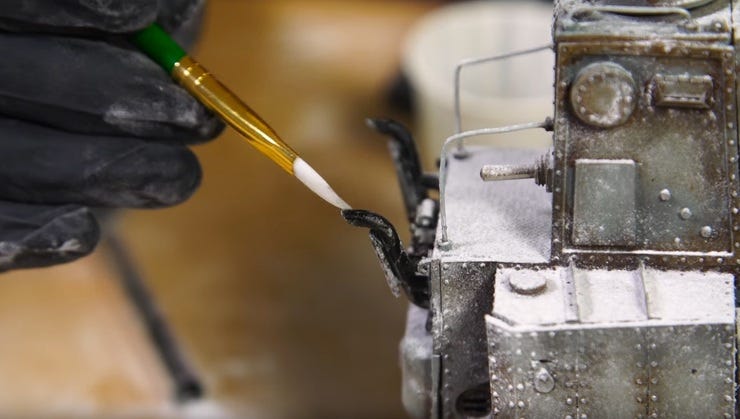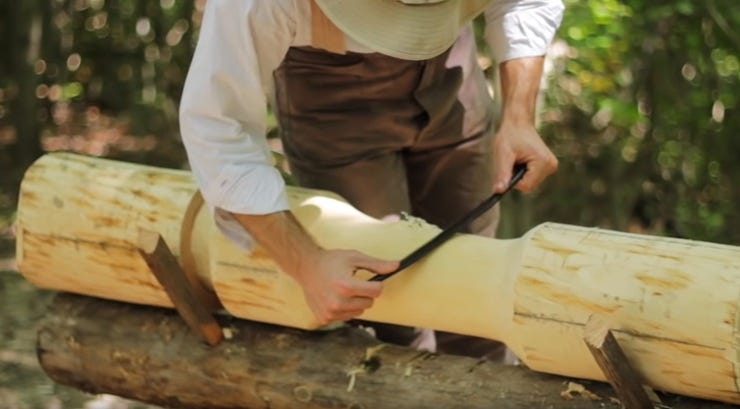Gareth's Tips, Tools, and Shop Tales - Issue #16
Great Sanding Tips
Recently, Izzy Swan invited Mike Z from Klingspor Woodworking into the shop to share some expert sanding tips. There is some great stuff in here, like the above idea of painting a red dot on the pad of your orbital sander. As you work the sander, if you can see the dot, you know you are applying too much pressure. When the dot is a blur, your sanding pressure is correct.
Creating a 3D Cutting Stencil
Donald Bell shared this on Instagram: "A little epiphany I just had. To create a stencil for cutting this cork mat for a 3D printed project, I printed the first few layers to get the exact outline. Glued it down with a little spray adhesive."
Be More Productive But Don't Fear Hard Work
When I wrote about Scott of the Essential Craftsman, talking about how "details layer," it got a big response. Several people mentioned this video and how moved they were by it. One respondent even said that it made him cry, it was so lyrical and touching. In it, Scott talks about productivity, efficiency, the value of hard work, and the joys of making -- all while building a home access ramp for his aging mother. Worth your time.
More on Gaffer Tape "Caps"
Newsletter reader Eric Kaplan writes: "I was intrigued by the caps for the duct tape [see last week's issue], and started thinking about making my own. However, today I discovered PVC “test caps” for 3” pipe, at 44-cents a piece. They work really well for this application! Holds about the same volume as an Altoids tin."
Snow Effects in Modeling (and Lessons in Storytelling)
This Tested video on tricks for creating snow effects for dioramas might seem too specific for this general-interest maker newsletter, but I think it makes a point that's relevant to any sort of weathering, faux finishing, distressing, etc. When you do such weathering, everything you do should tell a story. You want to think through how this object came to be aged and weathered and attempt to tell the story of that journey in how you add your weathering F/X.
Must-See Maker TV
I just discovered this wonderful channel called Mr. Chickadee. On it, "Mr. Chickadee" and his wife let us follow along as they create a beautiful rough-hewn homestead in the wilds of Kentucky using little more than antique hand tools and traditional methods of carpentry. The unnarrated videos are beautifully shot by Mrs. Chickadee and Mr. Chickadee is one hell of an old-school carpenter.
Shop Tales: Make It Seem Hard, Not Be Hard
Years ago, I was at a Bay Area Maker Faire. I'd been teaching under our new "Learn to Solder" tent. Participants paid a couple of bucks, sat down, learned the basics of soldering, and then put together a small electronics kit. The kit, a flashing-LED Maker Faire pin, was little more than a tiny printed circuit board (PCB), a blinky LED, battery holder, battery, and pin. There kit had about five solder points. I soon came to realize why the workshop and that kit where such genius. They made an intimidating skill seem simple, accessible, and the kit was just challenging enough to feel like you'd accomplished something. It was a literal badge of accomplishment you could wear. There was a very important idea here: Make it seem hard, but not be hard.
This was immediately driven home after the workshop. I was at the Solarbotics booth, talking to Dave Hrynkiw. A father and his maybe ten year old daughter were looking at kits, "Learn to Solder" badges blinking away on their shirts. Dave began showing them kits, emphasizing solderless beginner kits. The girl, slightly indignant, said: "NO, I don't want solderless. I know how to solder," pointing proudly at her badge. They bought a solder-based kit and off they went.
When teaching something new, create the shortest distance between the learning part and the completion of a successful first project. If the student can wear it proudly, or otherwise show it off, all the better.








